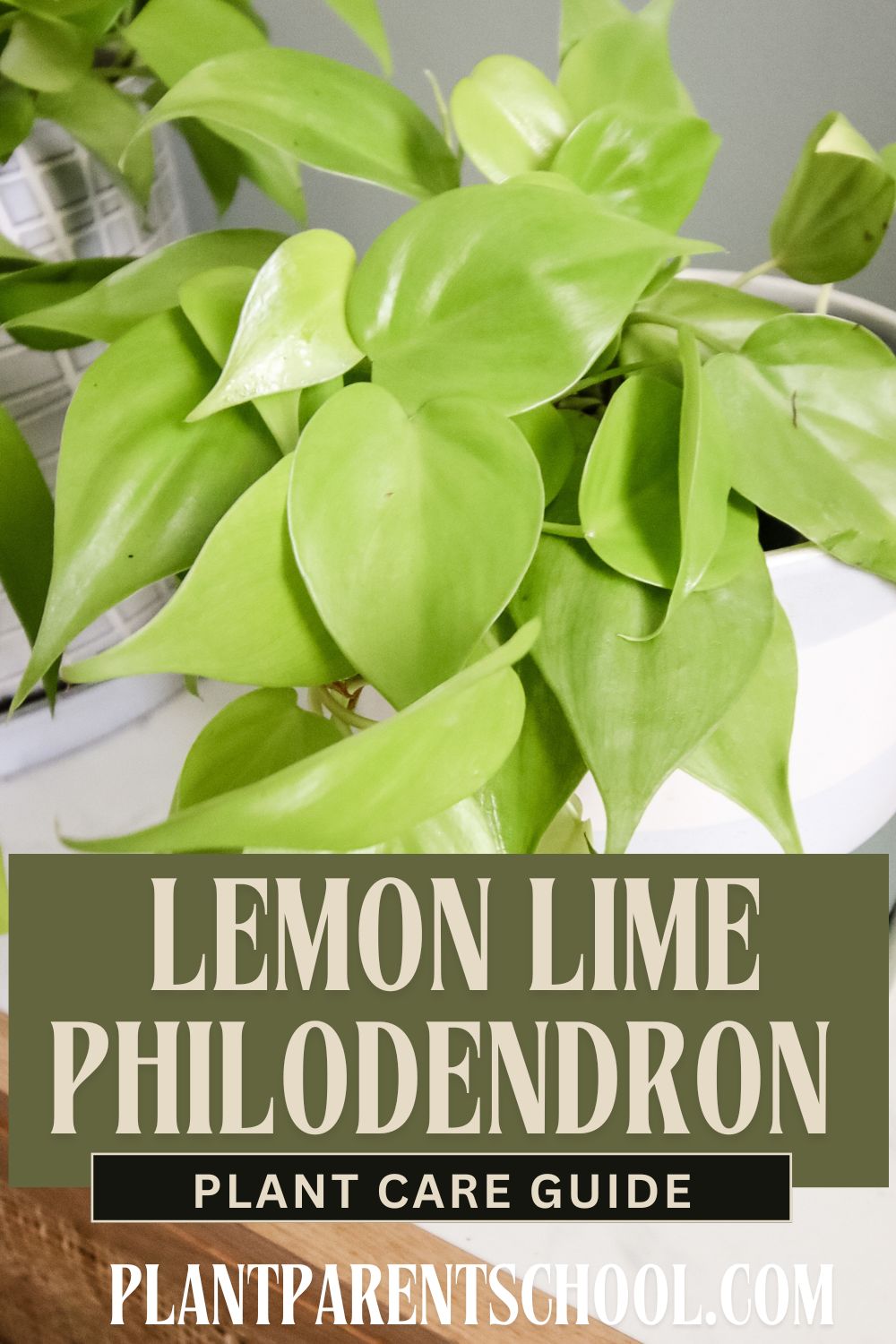The Philodendron Selloum, also known as the Tree Philodendron or Philodendron bipinnatifidum, is a large, lush houseplant that can bring a tropical feel to any indoor or outdoor space.
Quick Look
- 🌞 Lighting needs: Bright, indirect light
- 💧 Watering needs: Moderate; keep soil consistently moist
- 📏 Mature height: Up to 5 feet indoors
- 🌱 How to propagate: Stem cuttings or air layering
- 🚫 Toxic/non-toxic: Toxic to pets and humans
- 🌸 Flowering: Rarely indoors
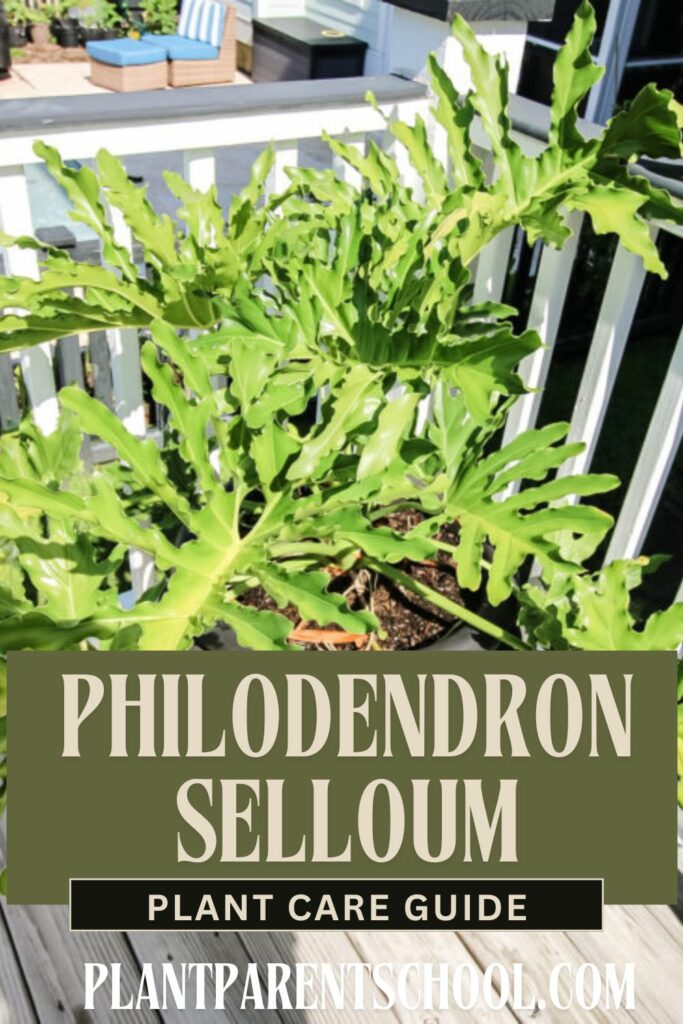
What is Philodendron Selloum?
The Philodendron Selloum, also known as Philodendron bipinnatifidum, is a popular houseplant known for its large, glossy, deeply lobed leaves.
Other names for Philodendron Selloum include Tree Philodendron, Lacy Tree Philodendron, and Cut-Leaf Philodendron.
Its lush foliage and low-maintenance nature make it a favorite among both beginner and experienced plant enthusiasts.
Origins
Native to the rainforests of South America, particularly Brazil and Paraguay, Philodendron Selloum thrives in tropical climates with warm temperatures and high humidity.
Availability
While Philodendron Selloum is popular in the houseplant community, it is not considered rare and is widely available in nurseries and garden centers.
Toxicity
Yes, Philodendron Selloum is toxic to humans and pets if ingested. It contains calcium oxalate crystals that can cause irritation and discomfort when consumed.
Philodendron Selloum vs Monstera Deliciosa
Philodendron Selloum is often confused with Monstera Deliciosa due to their similar split leaves. However, Monstera is not a philodendron and has different care needs. Philodendron Selloum is the true split leaf philodendron.
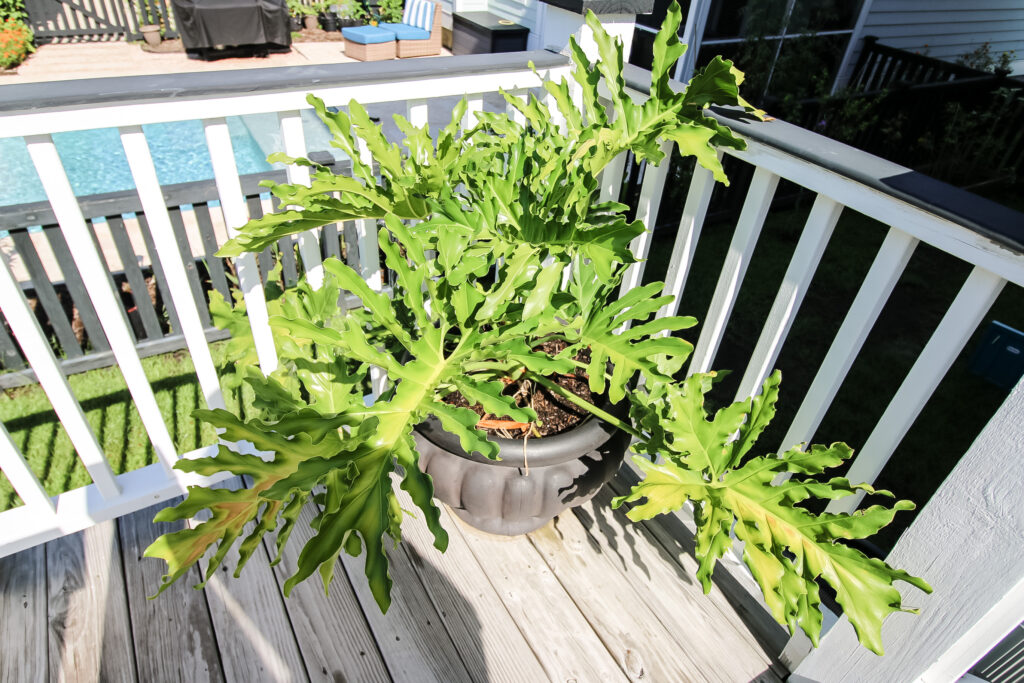
Philodendron Selloum Care Guide
This care guide will help you keep your Philodendron Selloum healthy and thriving.
Watering
Water your plant when the top inch of soil feels dry to the touch. These tropical plants do not like to dry out fully between waterings.
Avoid overwatering to prevent root rot. Especially if you are keeping your plant outdoors where it will get rained on, ensure proper drainage to prevent flooding and root rot.
Misting
Misting is not essential for Philodendron Selloum, as it thrives in average household humidity. However, misting can be beneficial in dry indoor environments or during hot weather.
If you keep this plant indoors during the winter, provide humidity through misting, a humidifier, clustering it with other plants, or using a pebble tray.
Lighting
Place your Philodendron Selloum in bright, indirect light for optimal growth. Avoid direct sunlight, as it can lead to leaf burn.
Indoors, a spot near a north or east-facing window is ideal. Outdoors, they do great in bright light that's shaded by an overhang or tree.
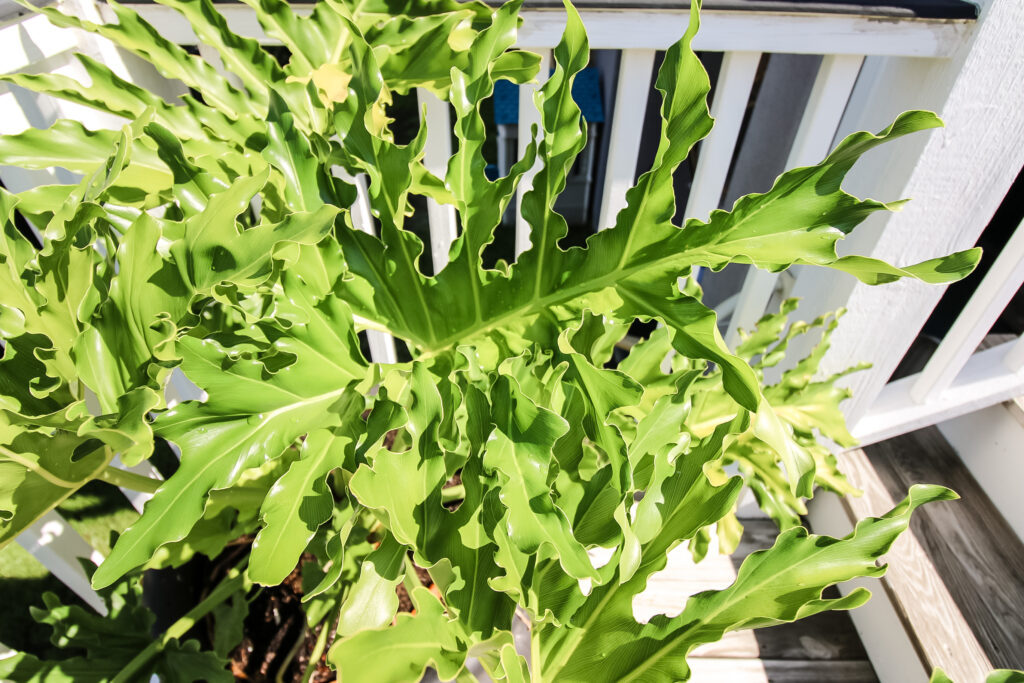
Outdoor Care
Philodendron Selloum will thrive outdoors during the warmer months, as long as it is protected from direct sunlight and strong winds.
In colder climates, bring your plant indoors or cover it on the coldest nights.
Soil and Potting
Use a well-draining potting mix for your Philodendron Selloum. It prefers slightly moist soil but can tolerate short periods of dryness.
Repot your plant every 2-3 years.
Choose a pot with weight to prevent tipping, as these plants can grow quite wide.
Support
Philodendron Selloum can benefit from a moss pole for support as it grows taller. Alternatively, you can stake this plant or give it a trellis to contain its spread.
Fertilization
Feed your Philodendron Selloum with a balanced liquid fertilizer during the growing season (spring and summer) every 2-4 weeks.
Reduce or stop fertilization during the dormant period (fall and winter).
Propagation
Propagating Philodendron Selloum in water is easy:
- Identify a healthy branch with new growth.
- Snip the branch with sharp scissors.
- Remove any lower leaves.
- Place the cutting in water, ensuring at least 1-2 nodes are submerged.
- Change the water weekly and top off as necessary.
- Roots should form in 2-4 weeks. Once the roots are 2-3 inches long, plant the cutting in soil.
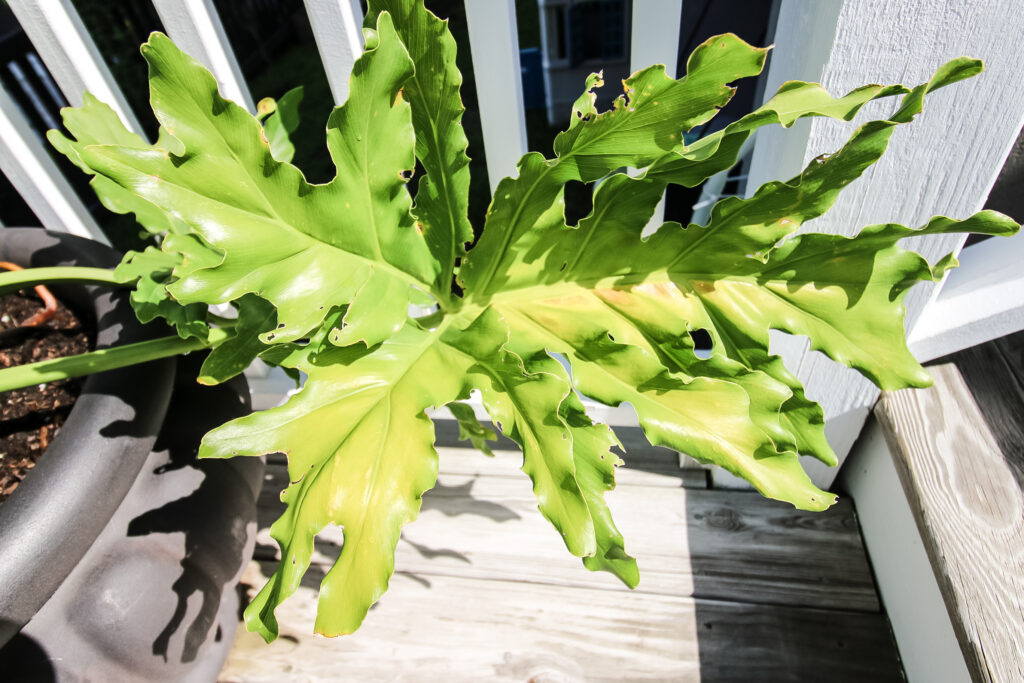
Troubleshooting
Yellow Leaves
Yellow leaves usually indicate overwatering, underwatering, or exposure to direct sunlight. Assess your watering routine and light conditions to determine the cause and adjust accordingly.
Brown Leaf Tips
Brown tips often indicate low humidity or inconsistent watering. Increase humidity and ensure you’re watering properly.
Leggy Growth
Leggy growth may indicate insufficient light. Move your plant to a brighter location to encourage fuller growth.
Pests
Regularly inspect your plant for signs of pests such as spider mites, aphids, or mealybugs. If infested, treat the plant with insecticidal soap or neem oil.
By following these care guidelines, your Philodendron Selloum will thrive, bringing a lush, tropical feel to your indoor or outdoor space. Enjoy the beauty and ease of caring for this delightful houseplant!
Want to Build Your Plant Care Confidence?
If you're ready to take your plant parenting to the next level, join Plant Parent School! This self-paced course will teach you everything you need to know about watering, lighting, troubleshooting, and more—so you can enjoy thriving houseplants with ease. Click here to enroll today!


